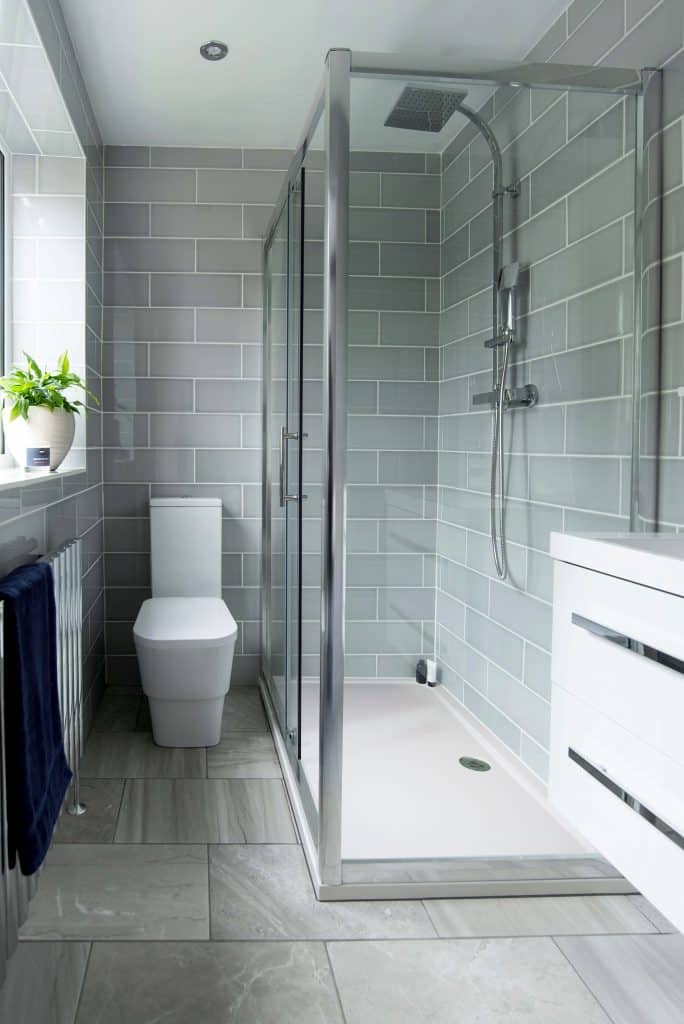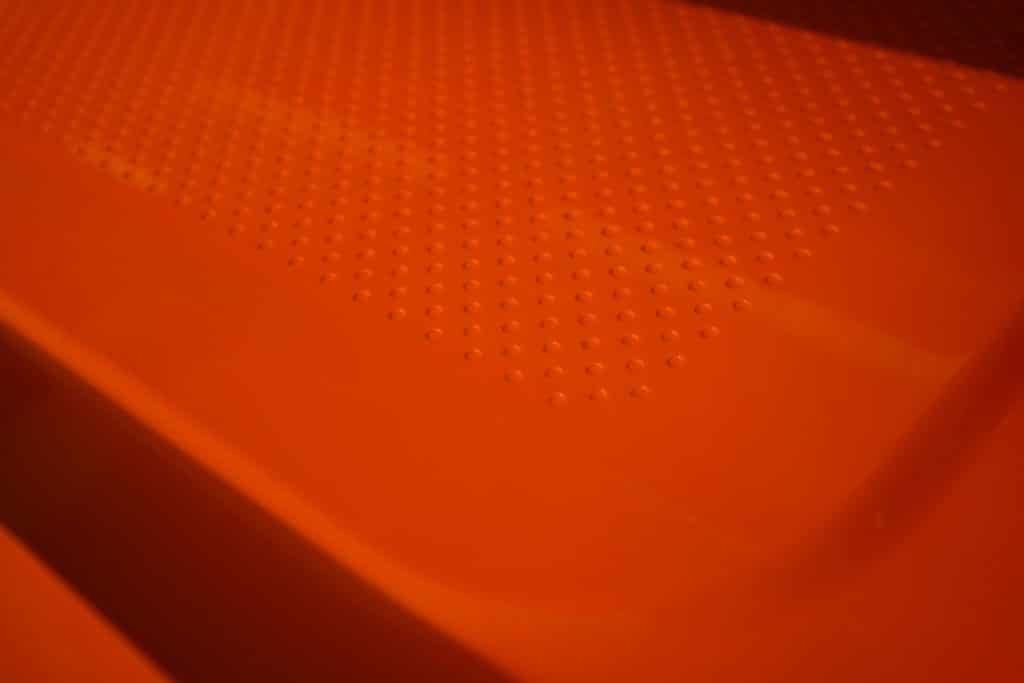
variation in coating application Archives - SENSTEC Anti-Slip Shower Trays
When you’re in the market for an anti-slip shower tray, the lack of comprehensive information can leave you uncertain about what is an anti-slip shower tray and how to choose the right type. Understanding what anti-slip is and its significance can help you make an informed decision for a safer showering experience.
Defining Anti-Slip:
Anti-slip refers to a design specifically crafted to prevent slipping or to remain stationary. In the context of shower trays, this feature becomes crucial to avoid slips and falls during a shower, considering the inherent slipperiness of the shower environment.
What is an Anti-Slip Shower Tray:
Anti-slip shower trays are designed with either a specially applied coating or an integrated anti-slip design to enhance safety (Read more about this). Their purpose is to prevent accidents caused by the slippery conditions created during a shower and the use of products in the process. Choosing an anti-slip shower tray is a proactive step towards preventing slips and falls, especially for vulnerable individuals or those seeking a secure and worry-free showering experience.

Regulations and Standards for Anti-Slip Shower Trays:
In Europe, for domestic purposes, traditional shower trays must adhere to specific manufacturing standard regulations, notably the CE marking in compliance with EN 14527. However, when it comes to ‘anti-slip’ shower trays, there are no further mandatory regulations or standardised testing procedures, which can lead to a confusing buying experience.
The Challenge with Marketed ‘Anti-Slip’ Trays:
The absence of standardised regulations means that any shower tray can be advertised as “anti-slip”. This unfortunate reality highlights the importance of being well-informed and discerning when selecting the right anti-slip shower tray for your needs.
SENSTEC’s Integrated Anti-Slip Design:
At SENSTEC, we have taken a different approach to ensure that our anti-slip shower tray genuinely delivers on its promise. Our design incorporates anti-slip properties directly into the tray during the manufacturing process, rather than relying on an applied coating. The integration of “dimples” within the tray ensures that the anti-slip properties will remain effective for the entire lifespan of the shower tray. This is just one of the advantages of a SENSTEC Anti-Slip Shower Tray. Our product was developed through years of research to achieve the perfect combination of dimple shape and spacing. Only when we achieved exceptional anti-slip performance while maintaining effortless cleaning and comfort underfoot were we satisfied with the design. Read more about cleaning anti-slip

Consistency and Reliability:
SENSTEC trays are shaped in a mould and made by hand, ensuring that each tray is identical. Following completion, each SENSTEC tray undergoes an in-depth inspection process to meet our high standards.
This consistency ensures that a new SENSTEC tray will have the same anti-slip properties as when it was 1, 3, or 10 years old. In addition, our dimples are designed to allow dirt to be carried away with the water, preventing them from becoming slippery. So, as long as the tray is cleaned like a normal tray, its anti-slip effectiveness will not diminish.
Putting SENSTEC to the Test:
At SENSTEC, we don’t solely rely on our claims; we subject our products to rigorous testing. Our anti-slip shower tray successfully underwent both the Pendulum and Barefoot Ramp tests.
In the Pendulum test, a score of 36 indicates a 1 in 1 million chance of slipping. SENSTEC achieved an average score of 48, an off-the-scale result, earning the design a spot in the Low Slip Potential category. Read more about the Pendulum Test
Similarly, the Barefoot Ramp test requires a score of 24 degrees for the best classification (Category C). SENSTEC surpassed this requirement, recording an average of 30 degrees, further validating the effectiveness of our anti-slip properties.
Summary:
Anti-Slip shower trays offer the best, least intrusive way to make your showering easier and safer. They come in many forms, varying in price and level of maintenance, but any type of anti-slip can improve your showering experience if properly maintained.
Adding stickers, paints, or mats to the tray after manufacture is a quick fix, but they will require reapplication/replacement and must be kept clean to avoid slipperiness, which is a time-consuming process.
Building the anti-slip into the tray is a more reliable, consistent solution that would involve fitting a new tray.
When choosing, consider the “Barefoot Ramp Test,” arguably the best test for evaluating the effectiveness of an anti-slip. If the tray you’re considering lacks a test rating, consider why that might be.
As a benchmark, SENSTEC has barefoot ramp test results of 30 degrees. Also, think about how easy the solution will be to maintain; if it appears that dirt and grime could get trapped, then this will become unsightly and, in turn, become slippery.
Still got questions that need answering?
Click the title to get started
Can’t find the answer you’re looking for?
How do you make a shower tray anti-slip?
There are numerous methods of manufacturing shower trays, stone resin backed vacuum formed acrylic sheet or gel-coat, pressed steel, injection moulded and poured polyurethane to name a few. This is how shower trays can be made- but not the answer to the question- How do you make a shower tray anti-slip?
At the moment there are two main methods for the manufacture of anti-slip shower trays. Currently the most widely used method of making an anti-slip shower tray is the application of a coating after shower tray manufacture. The second is a shower tray made with integrated anti-slip properties therefore the anti-slip properties are already built in.
Applied Coating
An applied coating is just that, applied after the shower tray is manufactured. You start with a normal shower tray as per BS EN 14527 and you apply a coating. This can be done by hand or by a degree of automation and may or may not go through a curing process.
The coating is in effect like a layer of sandpaper, the particles making what was a smooth surface less smooth. Depending on the granule size, shape and density, will have an impact on the slip resistance values.
One thing that I want to make clear is that any form of anti-slip shower tray is better than a normal standard shower tray- it really is a case of anything is better than nothing. That does not mean that it will be good enough- just better than nothing. Because of a lack or regulation- this is what our industry has been reduced to- a sorry state of affairs.
Let’s examine the advantages and disadvantages of both main methods of manufacture.
Advantages of an Applied Coating
There are several advantages to applied coatings. A major advantage is from a manufacturing perspective because the base shower tray production, processes and tooling require no change, and as a result is the most cost-effective solution.
Also, if a shower tray is sold without the factory applied anti-slip coating, DIY kits are available allowing the anti-slip coating to be applied after the shower tray is installed. For the 1000’s of shower trays installed long before anyone put the words anti-slip and shower trays together, this is a great solution.
Disadvantages of an Applied Coating
On the flip side there are also several disadvantages with coatings to be considered when looking at this option and weighing up against cost.
Most if not all shower trays that come with an applied coating have limitations of use. A good example of this is that the use of hair dye is prohibited. I don’t know about your house but this would be a problem in ours!
Another thing to be aware of and which is often overlooked is the life expectancy of the coating. A shower tray without the coating may well have a product guarantee of 15 years, but the coating itself can have a guarantee of as little as three. This is because of the temperature cycles in the tray, hot, cold, hot, cold….having an impact on the adhesion leading to eventual breakdown.
A further notable disadvantage to coatings is the cleanability. A shower tray that has been given a slip resistance value will have been measured in pristine condition, no build-up of body fat, dirt and grime. This body fat, dirt and grime will impact negatively on any slip testing. Coatings are notorious for being difficult to clean.
One more disadvantage is that the coating when applied manually can be either applied heavy or light, thick or thin. What is the slip resistance value of a ‘light’ coating when compared to a ‘heavy’ coating?
Integrated Anti Slip Properties
The second main method to manufacture an anti-slip shower tray is to design in the anti-slip properties into the tooling. This like everything also comes with advantages and disadvantages.
Advantages of Integrated Anti Slip Properties
A major advantage of integrated manufacture of the anti-slip properties is that the anti-slip properties will be with the shower tray for the life of the shower tray. There will also be no limitations of use over that of a normal shower tray- pass me the hair dye!
Also, as the anti-slip properties are included in the tooling, every shower tray made from that tool should in theory have the same anti-slip properties, hence removing the variation associated with a thick/thin heavy/light coating.
For integrated manufacture, with the use of modelling software the ‘things’ that make it anti-slip can be precision engineered to give a high degree of comfort and also visualisations such as water flow can be considered ensuring no areas for the build-up of body fat, dirt or grime. This is important for consistency of slip testing values.
Two of the most important things when considering an anti-slip shower tray, above the actual slip resistance values are comfort and cleanability. We sometimes need reminded that the normal intended end use is in barefoot, wet and soapy conditions.
Disadvantages of Integrated Anti Slip Properties
The major disadvantage with this type of integrated anti-slip shower tray is the associated costs with new tooling, and let’s face it, costs are important but manufacturers who go down this route see the additional unit cost being justified by the considerable advantages they would claim it brings.
Finally…
A third manufacturing method does exist but is relatively niche, made from a soft material that takes the shape of your feet when you stand in it. I don’t know enough about this product to knowledgeably discuss the advantages and disadvantages but at some time would hope to revisit and update this article.
These articles are designed to give sellers/buyers/specifiers the knowledge to compare different options and to understand why there are differing price points allowing informed decisions to use the anti-slip shower tray best suited for the given situation.
Still got questions that need answering?
Click the title to get started